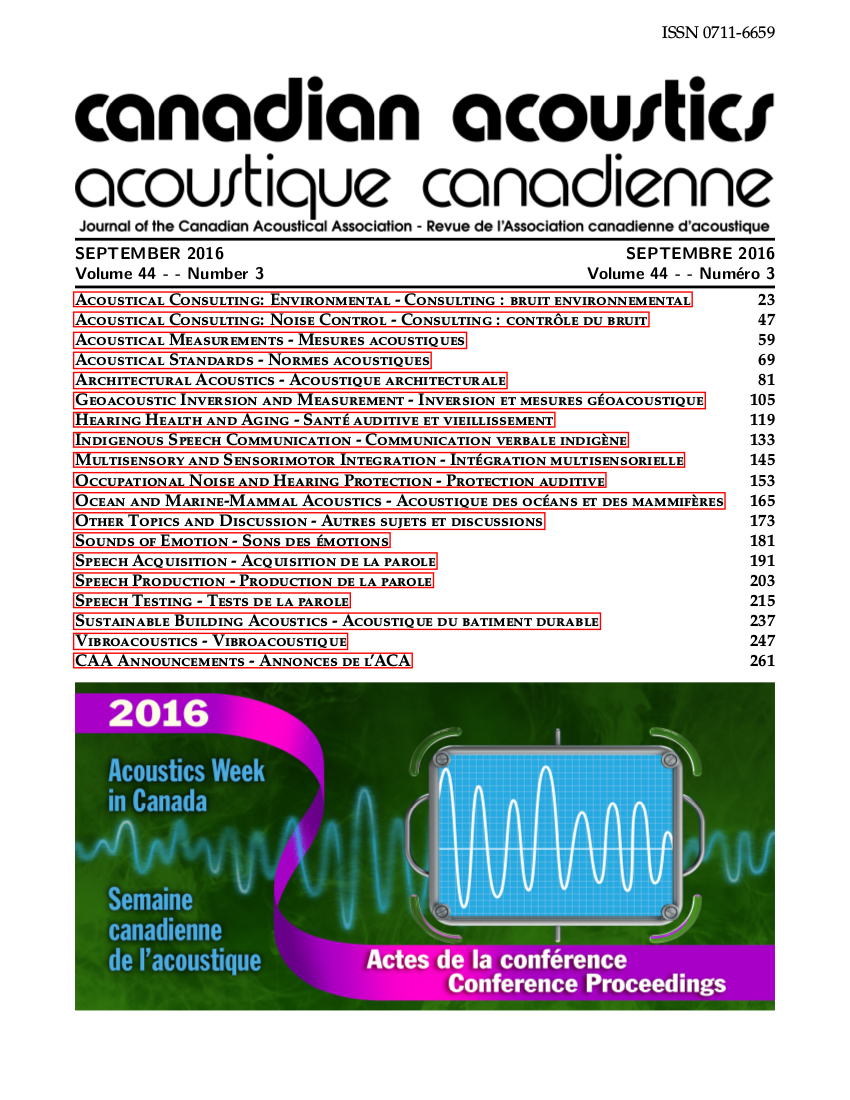Acoustic characteristics of obstruents in Huehuetla Tepehua
Abstract
The Totonacan languages of Mexico are known to make extensive use of glottal stop and laryngealization, but little is known about the phonetic realizations of these contrasts. As part of a larger project investigating laryngealization in Totonacan, this paper presents a description of some acoustic properties of pulmonic and glottalic (or laryngealized) stops and affricates in Huehuetla Tepehua (HT), a Totonacan language spoken in Hidalgo, Mexico. The sound inventory of HT includes a laryngealization contrast in stops at three places of articulation: /p t k p' t' k'/, and in affricates at two places of articulation:/ts tS ts' tS'/. Closure duration and voice onset time (VOT) were measured for both stops and affricates, as well as relative burst intensity and spectral moments of bursts. Duration, relative intensity, and spectral moments of frication were also measured in affricates. Results show that closure durations are slightly shorter in laryngealized segments than in pulmonic segments across both stops and affricates in all places of articulation, although there is still substantial overlap between them. VOT and closure durations vary across places of articulation in the crosslinguistically expected way, with labial segments /p p'/ having shortest VOT and longest closure, velar segments /k k'/ having longest VOT and shortest closure, and alveolar segments /t t'/ falling in between. However, there is a great deal of overlap between durations for all stops across place, manner, and airstream/laryngealization. Affricates are longer than any other segments analyzed here, with /ts ts'/ tending to have slightly longer frication than /tS, tS'/, but slightly shorter closures. Contrary to many descriptions of glottalic (i.e. ejective) sounds, the bursts of HT laryngealized stops are far weaker than pulmonic stops, sometimes even nonexistent, making a comparison of bursts between pulmonic and laryngealized stops unlikely to be fruitful, if not impossible to complete.
Additional Files
Published
How to Cite
Issue
Section
License
Author Licensing Addendum
This Licensing Addendum ("Addendum") is entered into between the undersigned Author(s) and Canadian Acoustics journal published by the Canadian Acoustical Association (hereinafter referred to as the "Publisher"). The Author(s) and the Publisher agree as follows:
-
Retained Rights: The Author(s) retain(s) the following rights:
- The right to reproduce, distribute, and publicly display the Work on the Author's personal website or the website of the Author's institution.
- The right to use the Work in the Author's teaching activities and presentations.
- The right to include the Work in a compilation for the Author's personal use, not for sale.
-
Grant of License: The Author(s) grant(s) to the Publisher a worldwide exclusive license to publish, reproduce, distribute, and display the Work in Canadian Acoustics and any other formats and media deemed appropriate by the Publisher.
-
Attribution: The Publisher agrees to include proper attribution to the Author(s) in all publications and reproductions of the Work.
-
No Conflict: This Addendum is intended to be in harmony with, and not in conflict with, the terms and conditions of the original agreement entered into between the Author(s) and the Publisher.
-
Copyright Clause: Copyright on articles is held by the Author(s). The corresponding Author has the right to grant on behalf of all Authors and does grant on behalf of all Authors, a worldwide exclusive license to the Publisher and its licensees in perpetuity, in all forms, formats, and media (whether known now or created in the future), including but not limited to the rights to publish, reproduce, distribute, display, store, translate, create adaptations, reprints, include within collections, and create summaries, extracts, and/or abstracts of the Contribution.


